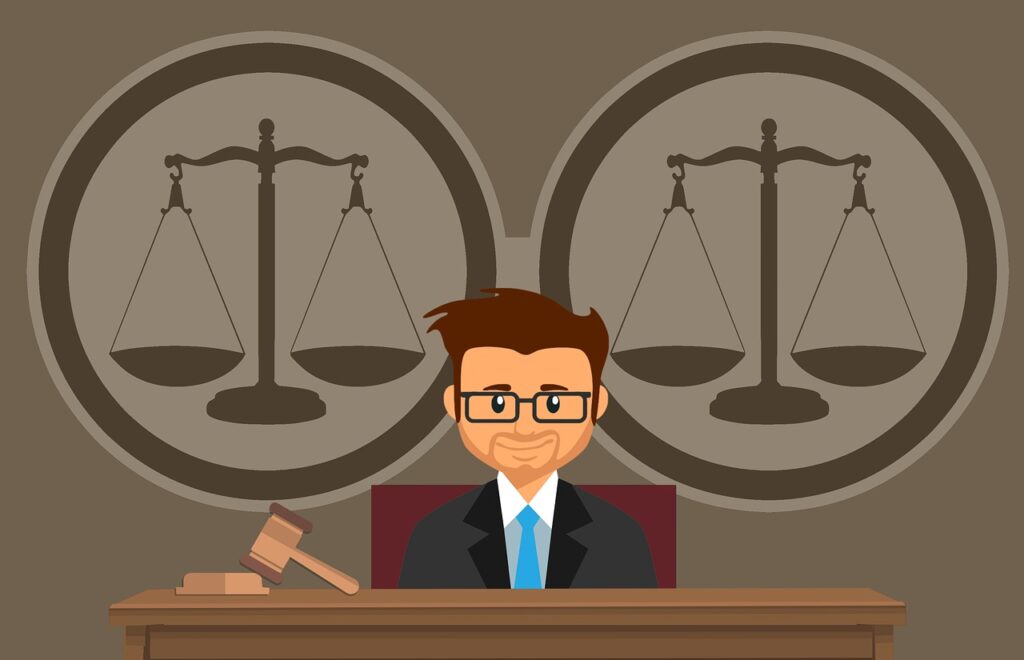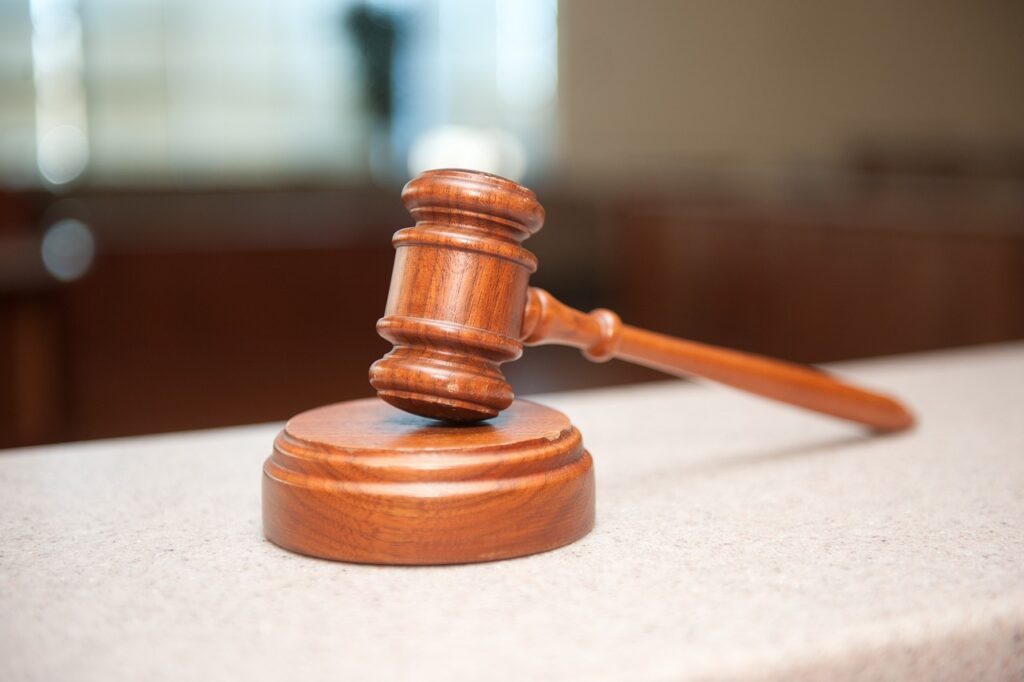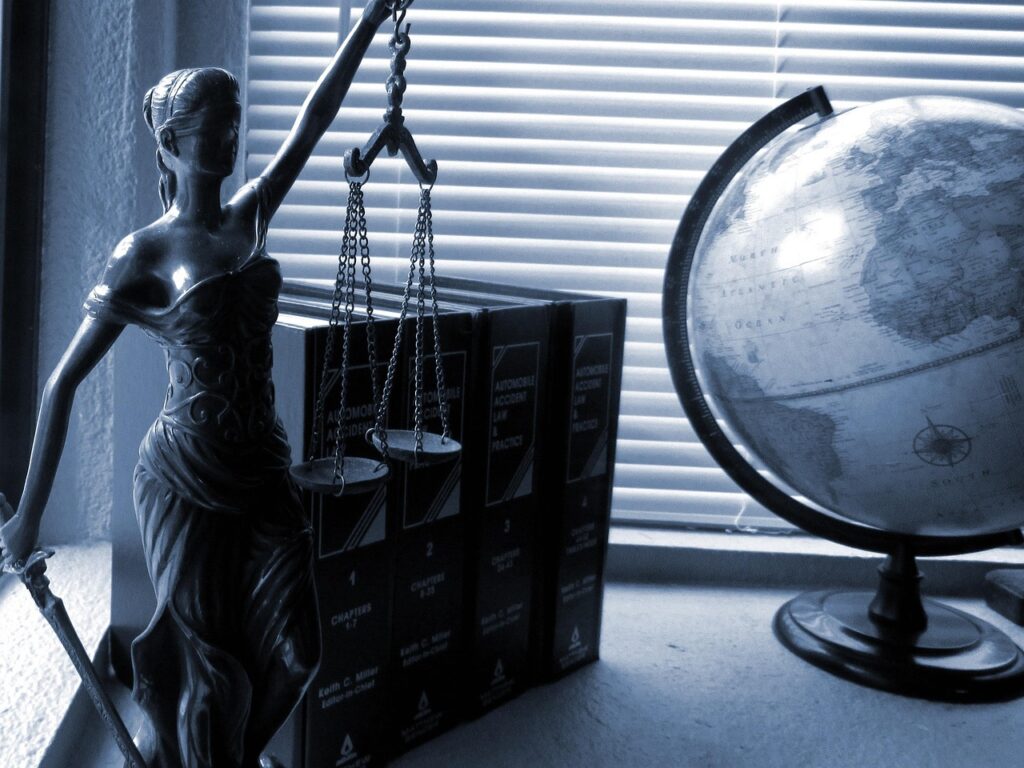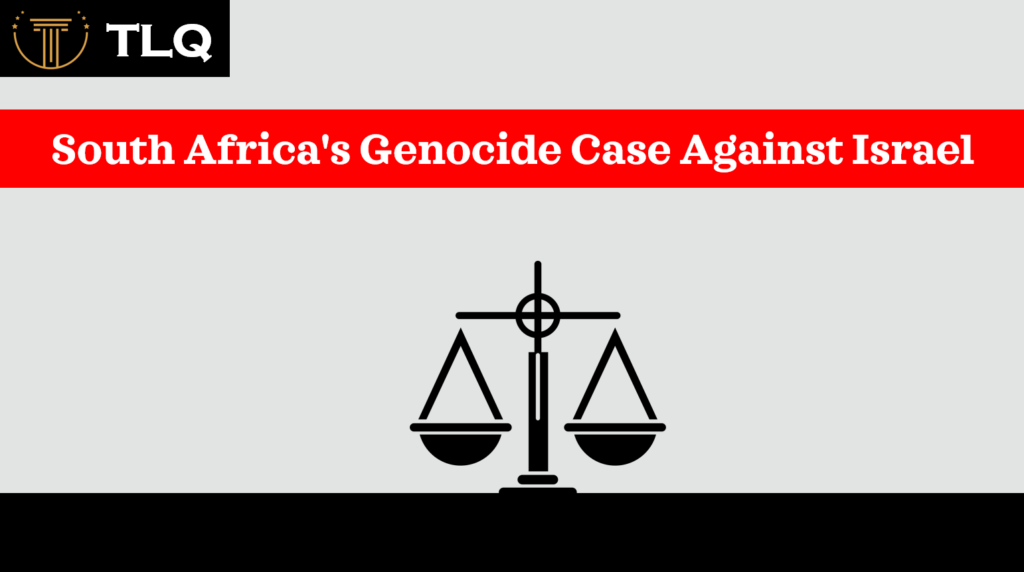Published On: September 30th 2025
Authored By: Shaheena Parvin M
CHENNAI DR.AMBEDKAR GOVERNMENT LAW COLLEGE PUDUPAKKAM
ABSTRACT
Facial Recognition Technology (FRT) is the most difficult aspect of surveillance today, creating profound conflicts between the fundamental state objective of security and the irresolvable value of an individual’s right to privacy. In India, FRT has been deployed at an accelerated rate across various sectors, including law enforcement, public works, commercial enterprises, and government institutions nationwide. In all instances of its implementation, FRT has arrived on the scene with little to no regulatory oversight, and as such has unveiled several constitutional, ethical, and social problems. Using the Supreme Court of India’s jurisprudential recognition of privacy as a strong constitutional right, this paper will examine the implications and viability of FRT regarding the democratically based autonomy, dignity, and informational self-determination. The paper will begin with a discussion on surveillance and its history, how it works, and the potential benefits and harms of its use, including the potential harm of creating a surveillance ecosystem, all of which can extinguish meaningful civil liberties. It also describes policy implications for governance of facial recognition technology (FRT) and then discusses NITI Aayog’s framework. The author argues that a rights-based approach that is guided by constitutional morality and balances privacy and innovation involves three essential principles: transparency, proportionality, and accountability in the design of FRT. So FRT can achieve its promises and potential as a form of governance in a constitutional democracy.
INTRODUCTION
What does it mean when the face that represents your identity becomes the basis for your surveillance? Facial Recognition Technologies (FRT) are no longer a possibility or emerging technologies, but an intrusive reality, being rubber-stamped into our daily lives in India, at an unprecedented speed. Policing, airport security, public transport, universities, and the private sector; biometric surveillance has morphed into an instinctive tool for the State to impose security and efficiency. All of this happens in a legislative vacuum, without a functioning regulatory infrastructure exposing the constitutional violations, ethical issues and societal risks to human dignity and future societies. The Supreme Court of India’s historic determination in Justice K.S. Puttaswamy v. Union of India (2017) enshrined the right to privacy as a fundamental and inalienable rule, creating boundaries around what the State can do with our data, and must ensure the use of any invasive systems includes transparency, proportionality, and accountability. If there are no standards of transparency, proportionality and accountability for FRT, they risk normalising constant and all-encompassing monitoring of citizens could lead to the disintegration of democratic civility and respect for citizens’ dignity. This paper will unpack FRT, and its clash with individual privacy rights (to identity), and provide legal, ethical and policy recommendations to ensure the emerging innovation builds liberty and not surveillance.
TRACING THE ORIGINS OF FACIAL RECOGNITION TECHNOLOGY
Facial Recognition Technology (FRT) has its origins in anthropometric identification at the end of the nineteenth century. The most popular of those methods of identification was Bertillion, which carried out measurements of facial and body dimensions to identify criminals. By the end of the twentieth century, computer scientist Woody Bledsoe was developing early FRT programs and the foundation for face mapping. His programs were also made by manually recording facial landmarks and algorithms to identify people based on those landmarks. The 1990s saw the introduction of the FERET programme, and similar projects started to standardise datasets and evaluation of algorithms research, which led to future advancements in FRT and us relying more heavily on this technology. In the early 2000s, the Face Recognition Vendor Tests (FRVT) continued to develop FRT technology with a number of evaluations that were aimed at simply finding out the accuracy of FRT systems testing on a larger scale. The first real practical achievement for FRT was in the 2010s with deep learning, convolutional neural networks, and reliable near-human levels of accuracy in real-time systems. Today, facial recognition technology is used in smartphones, law enforcement, and social media. As India deploys facial recognition technology in the Aadhaar project and in public surveillance projects, serious legal, ethical, and societal concerns emerge.
The debate on the concerns of using facial recognition technology without stepping on civil liberties is loaded. On one hand, advocates believe that this technology can be leveraged to help with public safety while minimising the impact on rights if designed in a way that adds specific safeguards and accountability measures. Reasonable safeguards may include limits regarding data storage and retention, that individuals are identified only according to a warrant, and that auditing systems are regularly used to verify accuracy and establish bias. [1]
TECHNICAL DIMENSIONS OF FACIAL RECOGNITION IN ENSURING PUBLIC SAFETY
There are opponents to facial recognition technology who argue that there is no way to design a technology that guarantees no infringement because any time you deploy the technology, there will be an element of risk. Just deploying the technology in public carries an implicit risk of infringing on liberty at a cost to civil liberty. If it is present, there will be a panopticon effect where people must modify their actions based on their fear of being watched all the time. The introduction of facial recognition technology in public spaces elicits glaringly obvious but principal questions that drive thoughtfulness of privacy. Loss of anonymity in public space is a legacy question that explores privacy. Achieving an appropriate balance between security and civil liberties calls for a commitment to transparency about the policy, publicly available usage parameters, and heightened accountability in the event of potential abuse. Ultimately, the stated risks are to be implemented based on the community’s levels of concern, and there should be a “proportional” response when there are serious concerns. If any policy relating to the use of surveillance technology is implemented, the organisation will need to have a robust data protection policy that will protect it against misuse of authority. Responsible surveillance recognition necessitates ongoing dialogue, since both surveillance recognition and its persistent technology of surveillance recognition will continue to require thought to legislation in order to ensure fundamental rights are prioritised while demonstrating an adaptability to continual work[2].
FUTURE PATH: NITI AAYOG’S GUILDLINES FOR ETHICAL FACIAL RECOGNITION DEVELOPMENT
The Principle of Privacy and Security develops a data protection regime which meets the Supreme Court’s test of legality, reasonableness and proportionality in the K.S. Puttaswamy v.union of India, (2017) judgement.
For example, the Digital Personal Data Protection (DPDP) Act 2023 aims to regulate the processing of an individual’s digital personal data while safeguarding a person’s right to be free from processing of their data, which is accurate or erroneous by another for a lawful reason.
- Applying a holistic governance framework: draw boundaries of liability stemming from the risks of harm/damages associated with developing an FRT.
- Ensure Safety and Reliability: Establish standards regarding safety and reliability of the FRT technology, regarding explanations, biases and errors related to the application[3].
CASE LAWS
Justice K.S. Puttaswamy (Retd.) v. Union of India, (2017)
Facts:
Justice K.S. Puttaswamy (Retd.), a former judge of the Karnataka High Court, challenged the constitutionality of the Aadhaar scheme. He argued that the Aadhaar scheme, with stored biometrics and demographic information, infringed on citizens’ rights to privacy. The government, on the other hand, argued that there was no fundamental right to privacy in the Constitution, using a precedent relied on by the Supreme Court in earlier cases.
Issues:
- Whether the right to privacy a fundamental right under the Indian Constitution?
- Does the Constitution protect the privacy of individuals from state action, and if so, to what extent?
Judgment:
A nine-judge Constitution Bench of the Supreme Court held unanimously that the right to privacy is protected as part of the right to life and personal liberty as protected by Article 21 and is also a component of the freedoms expressed in Part III of the Constitution.
Privacy is highlighted in our autonomy over personal decisions, bodily integrity, and control over information about us.[4]
People’s Union for Civil Liberties (PUCL) v. Union of India, (1997)
Facts:
PUCL, an NGO, filed public interest litigation questioning the practice of telephone tapping by the Government of India, because it was being done without adequate safeguards and violated citizens’ right to privacy as guaranteed by Article 21 of the Constitution.
The case revolved around Section 5(2) of the Indian Telegraph Act, 1885, which permitted the government to intercept communications under certain circumstances.
Issues:
- Does unauthorised telephone tapping violate the right to privacy as guaranteed by Article 21?
- What are procedural safeguards appropriate to protect people from arbitrary state surveillance?
Judgment:
The Supreme Court held that unauthorised phone tapping is a breach of the right to privacy protected by Article 21, unless it is sanctioned by law and subject to safeguards.
Instead of invalidating section 5(2), the Supreme Court listed elaborate procedural directions to avoid abuse of the telephone-tapping legislation, which included:
- Requirement for authorisation from a senior bureaucrat;
- Time limits for the operation;
- Records and oversight through a review committee;
The court stressed that intercepting communications can only take place during a public emergency or in the interests of public safety, must follow a procedure prescribed by law and must adhere to the principles of natural justice. The ruling also reaffirmed that the right to privacy can be found in the right to life and personal liberty (Article 21), which also contains reasonable restrictions due to a procedure prescribed by law.[5]
THE MECHANISM BEHIND THE FACIAL RECOGNITION TECHNOLOGY
Detection of a Face:
The initial step in facial recognition software is to find their faces and crop them out from an image or video frame. Computer vision, algorithms, and AI can pinpoint the shape(s) and patterns on a human face. Now that this face has been isolated, all we need to do is analyse it.
Extraction of Facial Features:
After detecting the facial features, the algorithms will extract features that are presumed or unique to the individual face. Features indicate the distance between eyes, nose, lips, contour of the jawline and patterns on skin (like wrinkles around the mouth). In totality, the features will identify their own unique facial “signature”.
Matching Facial Features:
Now that the image features have been extracted and specified, the landmark distance and shape can be matched against any related and pre-defined data in any database, by the use of mathematical models. The relevant variables include:
The distance between the landmarks ( eyes, nose, mouth)
The shape and contour/angle of the landmarks ( nose, lips, jawline)
The texture of the skin ( skin scribbles, wrinkles)
BENEFITS OF FACIAL RECOGNITION TECHNOLOGY
Facial recognition can be useful when utilised to provide value to society, including support for safety and security, crime prevention, and reducing human error. Some benefits are
- It helps to locate missing persons.
- It prevents theft in business.
- Enhances security in both public and private spaces
- It improves medical care
- It makes shopping faster and more convenient
- It also organises and tags photographs
CHALLENGES OF FACIAL RECOGNITION TECHNOLOGY
- It violates individual privacy
- Poses risks to data security
- It can be misused for fraud or other crimes.
- It can be abused by authorities or private entities.[6]
GOVERNMENT INITIATIVES
- Aadhaar and Biometric Authentication – Facial recognition has been incorporated as an additional layer of biometric authentication for identity verification under UIDAI as part of the Aadhaar project..
- DigiYatra – An initiative from the Ministry of Civil Aviation that leverages FRT for paperless check-in for air travel, which is currently implemented in some airports..
- Suraksha Mitra Projects – Events initiated at the state level using FRT, such as Tamil Nadu, Hyderabad, for crime prevention and crowd monitoring.
- Draft Personal Data Protection & DPDP Act, 2023 – outlines the principles for the lawful processing of personal data, is also considers regulating biometric data, while outlining protecting individuality
- Cybercrime Prevention Against Women and Children (CCPWC) – utilises FRT tools to track and prevent online crime against women and children, often in vulnerable circumstances.
CONCLUSION
The legitimacy of facial recognition technology (FRT) in India will depend not on its sophistication, but on a governance architecture that protects dignity, autonomy, and the constitutional right to privacy without compromise. FRT without specific statutory guardrails has the potential to normalise mass surveillance, chill free speech, and exacerbate asymmetries of power between the State, private enterprise, and the citizenry. A frame for ensuring FRT is truly future-proof needs to move away from this false dichotomy between security and liberty by issuing and more strongly articulating expectations for transparency, accountability for algorithms, proportionality, and data protection standards that firmly eliminate room for abuse. Ethical use of FRT requires restraint of action as much as technical accuracy of implementation, to ensure FRT is only used within limits authorised by democracy for a legitimate public purpose. Continuing its use within the Indian context needs to depend on FRT’s ability to foster constitutional morality and citizen empowerment; otherwise, FRT should be restrained immediately before it becomes a normalised tool of exploitation and compliance.
REFERENCES
[1] Facit Data Systems, Milestones in Facial Recognition Technology: A Historical Overview (Facit, 4 November 2024) https://facit.ai/insights/evolution-of-facial recognition-technology?utm_source accessed 11 August 2025.
[2] IEEE Public Safety Technology, Ethical Considerations in the Use of Facial Recognition for Public Safety (IEEE Public Safety Technology, publication date unspecified) https://publicsafety.ieee.org/topics/ethical-considerations-in-the-use-of-facial-recognition-for-public-safety/ accessed 11 August 2025.
[3] Vision IAS, Facial Recognition Technology (Vision IAS Monthly Current Affairs Magazine, 22 August 2024) https://visionias.in/current-affairs/monthly-magazine/2024-08-22/science-and-technology/facial-recognition-technology accessed 11 August 2025.
[4] Justice K.S. Puttaswamy (Retd.) and Anr. vs. Union of India (2017) 10 SCC 1.
[5] People’s Union for Civil Liberties (PUCL) v Union of India (1997) 1 SCC 301.
[6] Senstar, ‘Pros and Cons of Facial Recognition’ (Senstarpedia, 4 April 2021) https://senstar.com/senstarpedia/pros-and-cons-of-facial-recognition/ accessed 13 August 2025.




